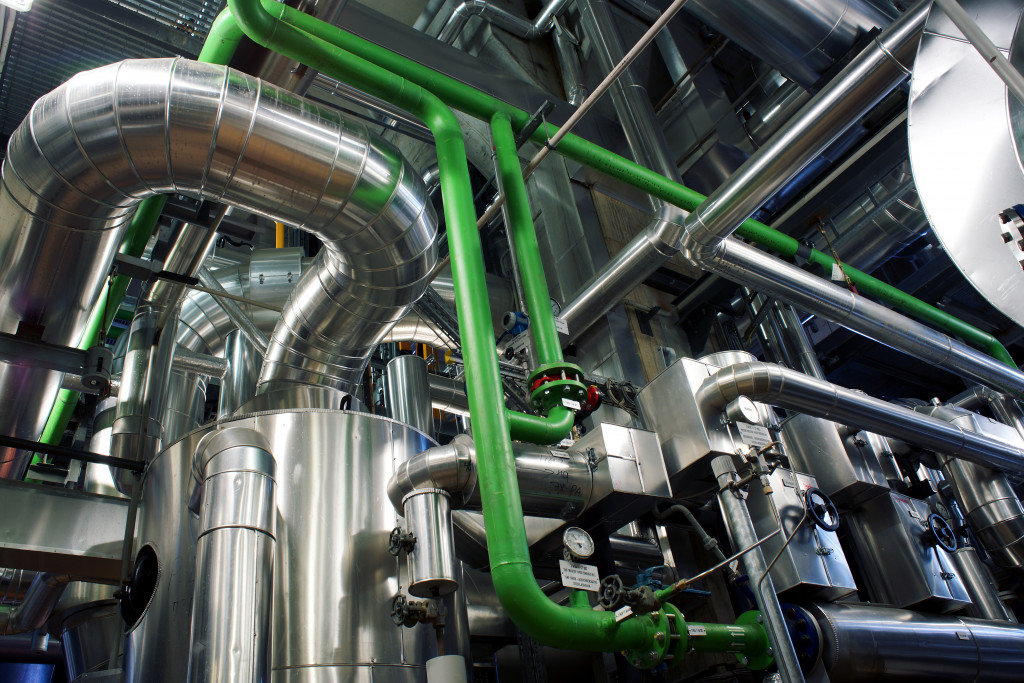It is essential to take care of your equipment in an industrial plant for many reasons. Your equipment is expensive, and if it breaks down, it can cost you a lot of money to replace or repair it. Additionally, if your equipment is not well-maintained, it can pose a safety hazard to you and your employees. Finally, if your equipment is not running correctly, it can negatively impact your production process, leading to lost revenue.
However, some pieces of industrial equipment are massive and unique enough to cause headaches for the maintenance team. Industrial tanks, for example, come in all shapes and sizes, and each type of tank requires extra care and maintenance. We will discuss taking care of the most common types of industrial tanks.
Storage Tanks
Storage tanks can store material until needed for use. They come in various shapes and sizes and can come from multiple materials, including steel, concrete, or plastic. Fortunately, they are durable enough to avoid constant care and maintenance.
The type of material stored in the tank will dictate the cleaning and maintenance required. Suppose you are storing hazardous materials. You will need to take special precautions to ensure that the tank gets cleaned correctly and that any fumes or vapors remain appropriately vented. If you are storing food or water, you will need to ensure that the tank gets cleaned regularly to prevent contamination.
Process Tanks
Storage tanks store materials until they are needed, while process tanks are part of the manufacturing process. Process tanks are often smaller than storage tanks and may be made of different materials, depending on the product manufactured. Process tanks may require more frequent cleaning and maintenance than storage tanks, as they may be more likely to become contaminated.
The maintenance team can take care of process tanks by regularly cleaning and inspecting them. It will help prevent contamination and ensure that the tanks are functioning correctly. Unfortunately, cleaning might be challenging, time-consuming, and costly to pursue after every use. If you have process tanks, you will need to develop a cleaning schedule that meets your needs and budget.
Jacketed Mix Tanks
Jacketed mix tanks have an outer shell that encases a second inner tank. The space between the two tanks is called the “jacket,” It is usually full of water or steam. This type of tank is often used in the food and beverage industry to heat or cool down products.
The jacketed mix tank requires regular cleaning and maintenance to prevent contamination and ensure proper function. The team will need to clean both the inner and outer tanks and the jacket itself. Additionally, the team will need to inspect the gaskets and seals to ensure they are not damaged or worn.
The maintenance team for jacketed mix tanks must take care of several different components to ensure that the tank functions correctly. The inner tank and the outer tank must be cleaned and inspected regularly. The jacket must also follow the same process, and the team must make sure that the gaskets and seals are in good condition. If any of these components are not correctly taken care of, the jacketed mix tank may not function correctly.
Transportation Tanks
Transportation tanks move materials from one location to another. They can be either stationary or mobile. Mobile transportation tanks are often used in the oil and gas industry to transport crude oil and other petroleum products.
Transportation tanks require regular cleaning and maintenance to ensure proper function and prevent contamination. The team will need to clean the tank, inspect it for damage, and ensure that all the seals are intact. If the transportation tank is mobile, the team will also need to check the tires and brakes to ensure they are in good condition.
Cryogenic Tanks

Cryogenic tanks keep materials at low temperatures. The purpose of cryogenic tanks is to keep the material cold to use later in the manufacturing process.
Cryogenic tanks are an essential part of many businesses. Without them, the manufacturing process would not be able to continue. However, because of the delicate nature of cryogenic tanks, it is often necessary for businesses to outsource maintenance to a company specializing in cryogenic tank care. The professional service provider can ensure that the tanks are properly cleaned and maintained, helping to prevent contamination and ensuring that the tanks function correctly.
Conclusion
Tanks are essential for many industries, but they require regular care and maintenance to function correctly. The best way to take care of your tanks is to develop a cleaning schedule and perform routine maintenance. It will help prevent contamination and ensure that your tanks are functioning correctly.


